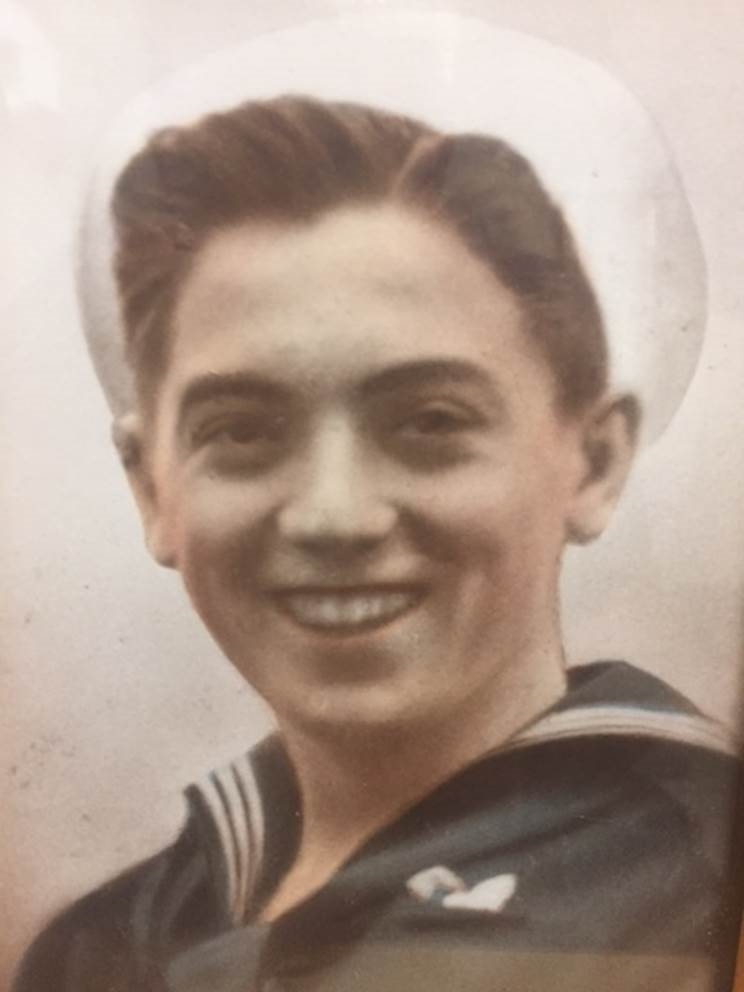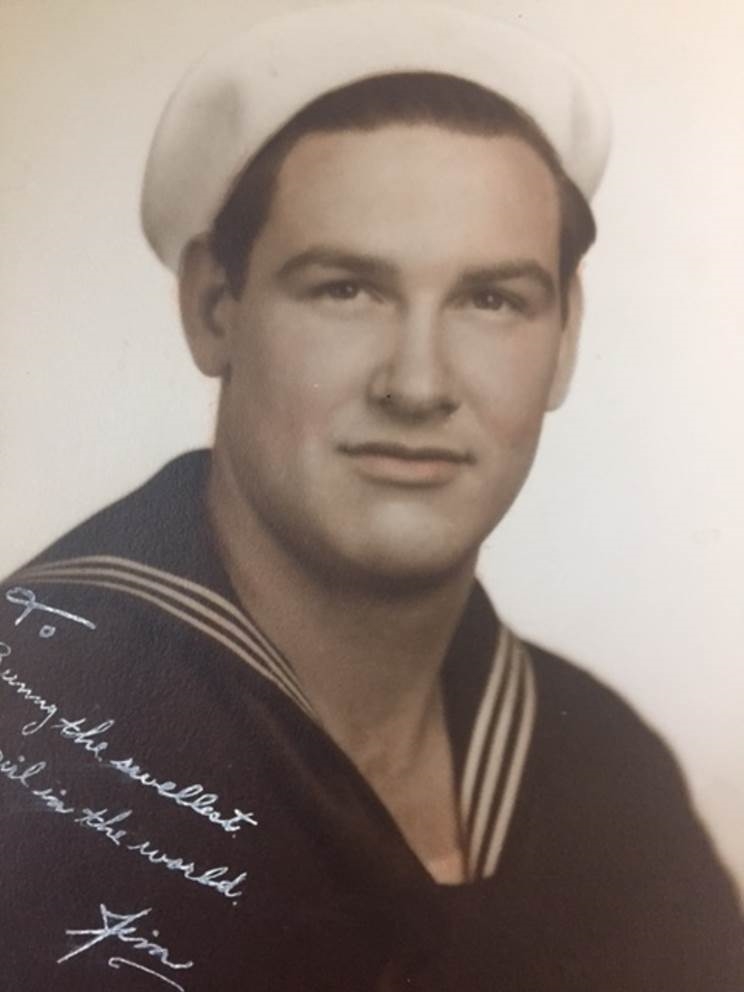|
The twenty merchant ships of convoy JW-56A were bound for Murmansk, Russia carrying vital war supplies for the Russians. The convoy departed from Loch Ewe on Jan. 12th, 1944 but other ships had sailed from the U.S.A. via Iceland before joining up. As many as twenty-two escorts took part in the convoy, although not all at once. As they sailed toward the Russian port they did not know that their existence had already been detected by the Germans. A wolfpack of six U-boats (Gruppe Isegrim) consisting of U-boats 278, 360, 425, 601, 739, and 965 were waiting for the approaching convoy west of Bear Island. Another boat, U-737 was en route to the group to relieve U-360. The Germans received intelligence reports that a PQ convoy was due to leave Iceland on the 20th, and estimated that it would reach the area where Gruppe Isegrim was operating by Jan. 26th. By Jan. 22nd air reconnaissance was being flown by Fw-200 Condor aircraft from Norway. They covered an area from Norway all the way to the Denmark Strait, with special attention being paid to the waters near Jan Mayen Island. Even though flights were made daily, the convoy was not located. It was not until Jan. 24 that U-boat command in Norway finally became aware that the convoy was in fact en route. A radio signal had been intercepted by the Germans on Jan. 17, it was a message from the Admiralty to the convoy. However for unknown reasons the signal had not been passed on to FdU Norway until the 24th. They now presumed the convoy to be in the North Cape area. At 0313 on the 25th Gruppe Isegrim was informed that a 'PQ" convoy was approaching the Bear Island passage. Two boats in Hammerfest, U-314 and U-716 were ordered to one hour readiness at 0328. At 0342 two boats of Gruppe Isegrim, U-312 and U-472, who were south of the area, were ordered to head toward the convoy at maximum speed. U-360 and U-425 are also ordered to exact positions to lay in wait for the convoy. U-956 out of Narvik was also sent to the area. It was U-965 which first sighted the convoy. At 1015 Jan. 25 they signaled "enemy sighted" in AB-6675". The High Command wasted no time, Gruppe Isegrim was ordered to operate on the report by U-965 and the Hammerfest boats (U-341 and U-716) were ordered to sea at 1104. The next report came from U-425 at 1122 when they sighted smoke in the distance. At 1229 U-601 also made contact reporting smoke in AB-6913. The next report came from U-360 at 1455 "two destroyers in AB-6656". It seems that the convoy had no idea it was being hunted, they remained in station with fifteen escorts. At 1635 U-601 reported that they had fired a torpedo at an escort, explosion heard, but it appears that no ship was actually hit. At 1645 U-965 reported that he was forced under by two destroyers, but got off one torpedo, which he heard explode, again no ship was actually damaged. At the same time U-956 and U-312 reported they could not reach the area until the 27th. At 1835 Jan. 25, 1944 U-360 finally scored the first hit. Kapitänleutnant Klaus-Helmuth Becker in U-360 damaged HMS Obdurate G-39 with a stern shot. There was only slight damage to the ship, one screw was knocked out, but they managed to remain with the convoy until they reached Murmansk. It was not until 2012 on January 25, 1944 when the first ship was sunk. Oberleutnant zur See Joachim Franze in U-278 fired three torpedoes at a freighter and two found the target. The Liberty ship Penelope Barker was hit on the port side causing severe damage. Her power was knocked out, the bridge was damaged, two lifeboats were destroyed and her funnel was knocked off. While the ship was being abandoned two men went below to assist some men who were trapped. One, a member of the Armed Guard and the other a Royal Navy doctor who had come over from HMS Obdurate earlier in the day to treat a man for appendicitis, neither were ever seen again. The ship sank ten minutes after being hit, in all sixteen men were lost, along with the tanks and other cargo in the ship. The survivors were picked up by HMS Savage G-20 and landed at Murmansk. Franze's report about the attack was not received at U-boat HQ until 0425 on Jan. 26, this was the first claim made of an actual sinking. Reports continued to flow in to U-boat HQ, but no more confirmed sinkings. At midnight U-312 was ordered out of the chase to provide weather reports (a job U-boat men hated). The convoy continued, only now they knew they were in for a fight for their lives. (Continued on Jan. 26...) |
© 2015 Michael W. Pocock MaritimeQuest.com |
Roll of Honor |
 |
In memory of those who lost their lives in SS Penelope Barker "As long as we embrace them in our memory, their spirit will always be with us" |
Name |
Rate |
Notes |
|
Boyarski, Philip |
Seaman 1st Class (USNR) |
Armed Guard |
|
Boyle, Victor J. |
Seaman 1st Class (USNR) |
Armed Guard |
|
Butkavecz, Stanley S. |
Oiler |
||
Gonzalez, Luis |
Fireman/Watertender |
Puerto Rican national |
|
* |
Hood, D.S.C., M.B., Ch.B., Maurice J. |
Surgeon Lieutenant (RNVR) |
HMS Obdurate G-39 |
Lorenzo, John |
Deck Engineer |
||
O'Bryant, Leroy M. |
Fireman/Watertender |
||
Prats, Charles |
Messman |
Spanish national |
|
Reid, Leo J. |
Seaman 1st Class (USNR) |
Armed Guard |
|
Romero, Arsenio MacA. |
Chief Cook |
||
Sherman, Lester S. |
Junior Engineer |
||
Teixeira, Henry St. C. |
Oiler |
||
Thom, James A. |
Able Seaman |
||
Vick, Alton B. |
Seaman 1st Class (USNR) |
Armed Guard |
|
Villano, Robert J. |
Able Seaman |
||
Wood, Paul O. |
Ensign (USNR) |
Armed Guard |
|
* |
Mentioned in Despatches (Posthumously) |
||
1. Sept. 3, 2017 Below is a photo of my uncle Robert Joseph Villano. He was one of the Merchant Marines lost in 1944 aboard the Penelope Barker. While I never met him, I heard so much about him from my late Mother. It has kindled me to find out about him and the souls lost when the ship was torpedoed. There is also a photo of Jim Thom, also late of Penelope Barker. I found this in the collection of letters and photos. Again thank you for what you do to not us forget true heroes. Warm regards Gregg Salomone |
|||
 |
|||
 |
|||
| 2. Feb. 15, 2022 I wanted to email you about post about the SS Penelope Barker which was sunk by a German U-boat in early 1944. Below is what your post stated: "One, a member of the Armed Guard and the other a Royal Navy doctor who had come over from HMS Obdurate earlier in the day to treat a man for appendicitis, neither were ever seen again." The Royal Navy Doctor was Lieutenant Surgeon Maurice John Hood (which you listed down below your post) from Galway, Scotland. The seaman he came over to treat was actually my father, Harold C. Hazard (of Cortland, NY) who was barely 19 at the time of this event. Dr. Hood was able to get my father to a lifeboat before then heading down to assist others. I don't know if Dr. Hood was ever able to help anyone else, but, as you reported, he did not make it off the ship. My dad lived on after the war, had four kids including myself and five grandchildren. We owe a debt of gratitude to Dr. Hood and his heroism that day. Thank you, Thomas H. Hazard Elmira New York, U.S.A. |
|||
| To submit a photo, biographical information or correction please email the webmaster. | |||